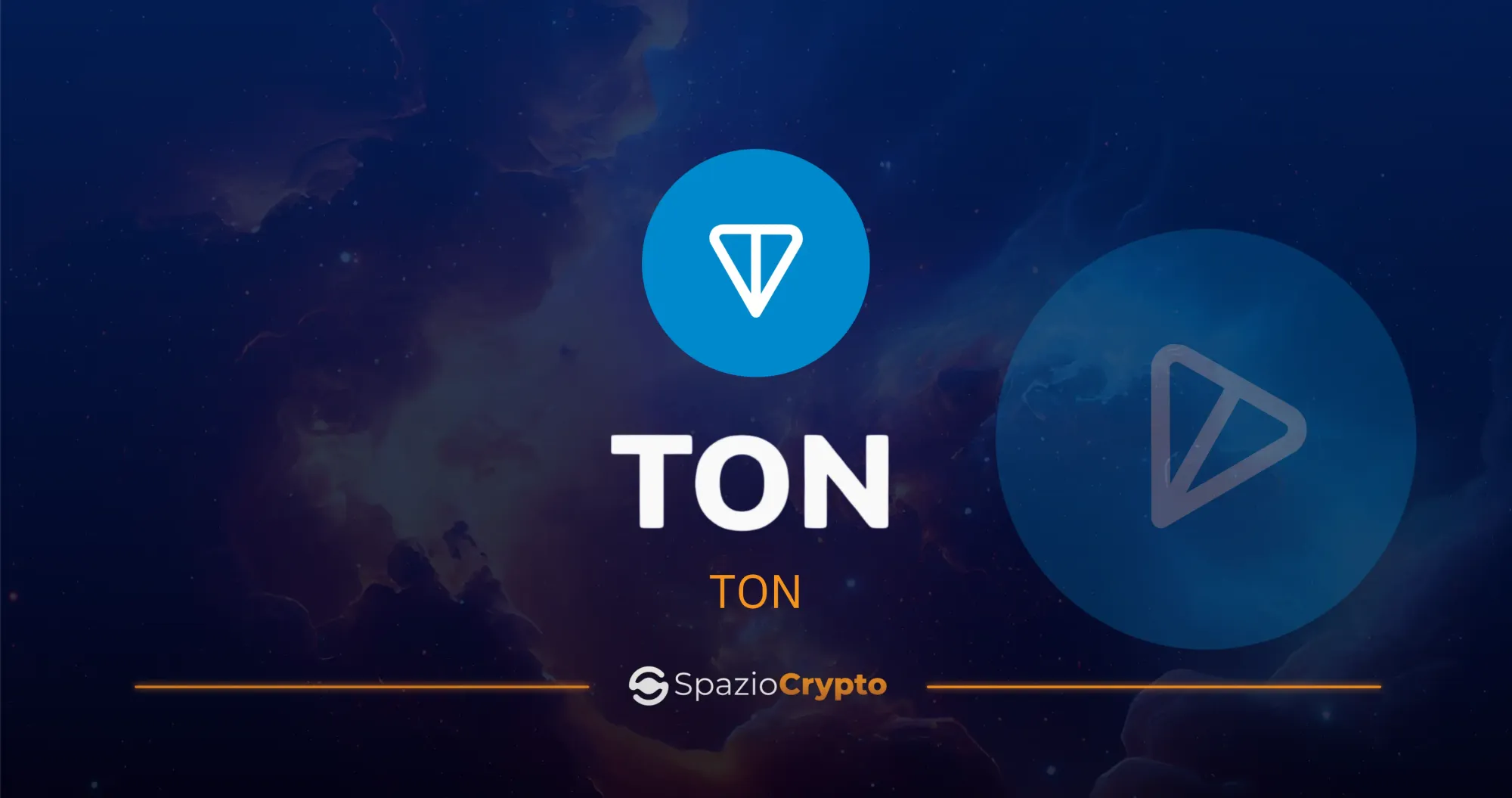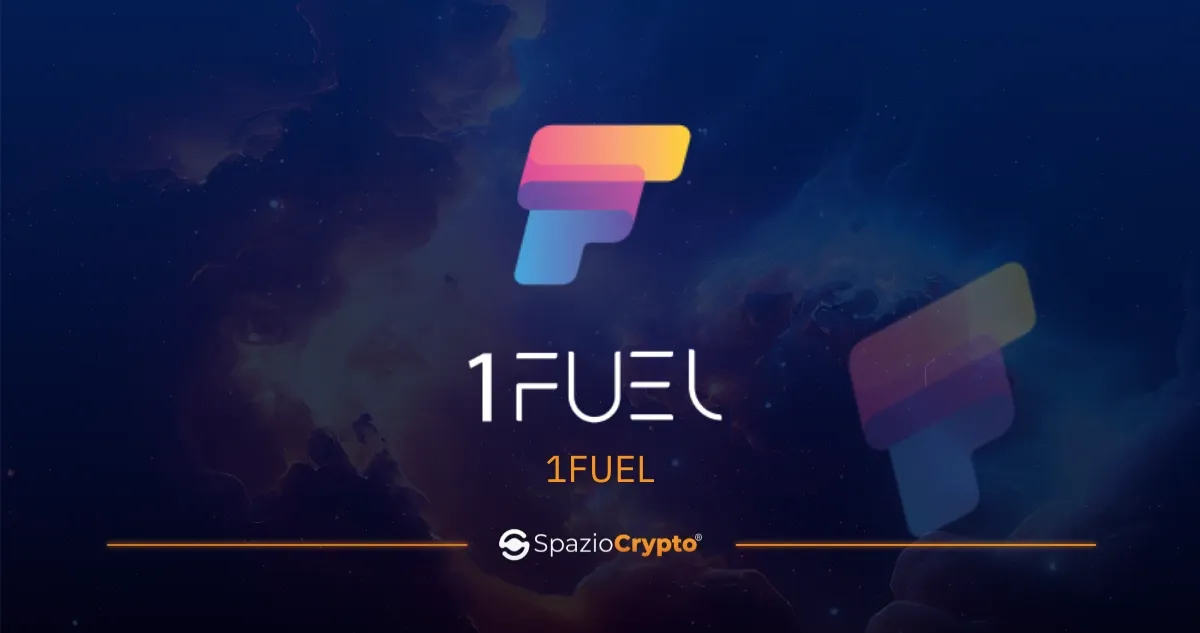If the names Pavel and Nikolai Durov don't ring a bell, don't worry. Not being familiar with the Telegram app, that would be far more serious.
What do they have in common?
The two gentlemen mentioned at the beginning are the creators of Telegram, but not only.
They have in fact thoughtfully created a blockchain called TON (The Open Network), which is really shaking up the entire web3.
It was born in 2018, with the goal of reaching millions of transactions per second.
Just to give you an order of magnitude, in case you're not a big blockchain expert, know that Solana (SOL) one of the fastest currently, supports around 65,000 per second.
But of course TON doesn't limit itself to just that, as it also aims to bring decentralised applications (dApps) and cryptocurrencies to a mass audience, in particular through its integration with Telegram.
Of course the road to TON and its ambitious project has not been an easy one. But don't worry, because I'm about to tell you everything (but really everything) you need to know about this blockchain.
What is TON and how does it work
As already mentioned, The Open Network is a blockchain famous for its speed and ability to handle (in the future) millions of transactions per second.
But how does it do it? Simple, TON is intelligent.
Bitcoin and Ethereum are historical blockchains, it is true, but they have scalability problems.
But TON is smarter, exploiting a single so-called 'masterchain' on which many 'sub-chains' depend, on which the workload is offloaded.
And it doesn't end there, because the maximum uptime is reached by 'shard-chains', i.e. other satellite chains that are activated by the sub-chains, after analysis, based on the workload of a given moment.
TON thus remains a Layer 1 blockchain that can, however, operate simultaneously on many layers, maintaining high speed but low cost.
Another key feature of TON is its interoperability.
In fact, TON acts as a 'bridge', or 'connection', between different blockchains, facilitating the exchange of assets.
If this doesn't tell you much, know that each blockchain was created to be 'isolated' from the others, and the fact that it becomes a bridge only comes later. Creating these links means being able to move your assets from one blockchain to another, taking advantage of all the benefits associated with that particular blockchain.
This means, among other things, being able to take advantage of lower transaction costs, or faster transaction speeds.
In addition, I'm going to tell you about some really cool features that TON makes available right through Telegram, but first...a little history.
Two (tokens) are better than one
I mentioned obstacles, right? That's because TON's road has been a particularly tough one.
TON was born in 2018, the token that was supposed to be associated with the blockchain, and for which a launch was already planned, was called Gram.
That was all very well, until the SEC (Security and Exchange Commission) decided to put a spoke in the wheels of TON's development in 2020 by preventing it from being released on the market. The reason? Issuance of unregistered securities (the same fate suffered later by XRP, take a look here).
Result: the Durov brothers were forced to return the funds (1.7 billion) to investors who were already salivating for their tokens.
But the creators of Telegram did not give up, deciding to try again. This time they entrusted the development of TON to the TON Foundation, the company that currently runs the blockchain, which in turn is run by the open-source community and independent developers.
This led to the release of the token currently in use on TON, the Toncoin (a bit more mundane), through which the blockchain works.
The small army of TON
The ones listed below are all the dApps that support the blockchain, and operate via Toncoin.
Not exactly a sparse ecosystem:

A quick overview may help to better clarify this seemingly complex ecosystem:
1. Wallets
In the wallets section, we see several wallet options that support TON. These wallets allow users to store, send and receive Toncoin and other assets on the TON blockchain.
2. Staking
Diverse staking platforms such as Tonstakers, TonStake, and TON Validators offer users the ability to staking their TON tokens to earn rewards and participate in network governance.
3. Explorers
Tools such as Tonscan, Tonviewer, and Whales Explorer are used to explore and monitor the TON blockchain, displaying transactions, smart contracts, and other information.
4. Exchanges (CEX and DEX)
- Centralised Exchanges (CEX): large names such as OKX, Huobi, KuCoin, and Bitget are listed, where Toncoin and other cryptocurrencies can be exchanged.
- Decentralised Exchanges (DEX): allow decentralised exchanges directly on the TON blockchain.
5. Dev Tools
These are development tools and libraries for developers that facilitate the creation of dApps and smart contracts on TON.
6. NFT Services
NFT-related platforms support the creation, exchange and management of Non-Fungible Tokens within the TON ecosystem.
7. Collectibles and Memecoins
- Collectibles: TON supports the creation of digital collectibles such as TON Punks, Whales Club, and other NFT-based collections.
- Memecoins: there are several Memecoins such as $BOLT, $FISH, $DUCK, created specifically to foster entertainment and create some community engagement.
8. Games
The Games section highlights TON's support for blockchain gaming with games using the blockchain for various mechanics, rewards and interactions.
9. Bridges and Cross-chain
TON includes 'bridges' to other blockchains such as Ethereum (TON ↔ ETH), Binance Smart Chain (TON ↔ BSC), facilitating, as we have seen, the transfer of assets between different blockchains.
10. Stablecoins
TON supports the use of stablecoins that allow users to perform transactions on the blockchain with a stable currency linked to the value of the US dollar or other currencies.
11. Zero Knowledge (ZK)
The section on Zero Knowledge Proofs is dedicated to support for Tonnel Network, a technology that enables anonymous and secure transactions, increasing privacy on the blockchain.
12. VPN, SocialFi and other services
- VPN: TON supports VPN services such as TON VPN, which enables private and secure browsing.
- SocialFi: TON encourages the development of decentralised social platforms that combine elements of decentralised finance and social interactions.
13. Discover & Lending
These are platforms for discovering dApps and decentralised financial services, such as EVAA and DAOLama, that enable lending and other lending transactions.
14. Fundraising
TON offers various fundraising options for blockchain-based projects that support new developments within the ecosystem.
15. Analytics
Various analytics tools allow you to monitor the progress of the blockchain, the tokens and the dApps themselves.
Telegram and Toncoin
If you haven't downloaded Telegram yet, maybe it's time you did (right whatsapp?)
As you can easily see, Telegram's classic messaging functionality is really nothing compared to the incredible depth of the ecosystem and the blockchain itself.
In addition to including a built-in wallet, Telegram also offers the possibility through bots to make payments related to TON transactions, especially microtransactions and quick payments.
Not only that, you could also take advantage of its NFT marketplace, or, in any case, easily get in touch with the web3 thanks to the app's ease of user onboarding.
Because yes, there are still those who don't know what web3 is.
Node validation
Now it is time to speak 'cryptonese', as far as blockchain node validation is concerned.
TON in fact works by means of a PoS (Proof of Stake), but with elements of Byzantine Fault Tolerance (BFT) to improve the security and speed of the network.
Well, even if you are a web3 novice, reading this site you will by now be very familiar with Proof of Stake.
Yes OK, but what about that other one?
The BFT protocol ensures that the network is designed to continue to function properly even if one party of validators attempts to "fool around" or fails to reach consensus.
Thanks to BFT, the TON network is resilient against potential attacks, and can ensure that transactions are secure even in the presence of compromised nodes.
In any case, the TON network validates nodes very quickly indeed, making it ideal for transactions that must necessarily take place quickly, such as payments.
What's in the future of TON?
Simple: mass adoption, zero knowledge and unlimited scalability.
This is because Telegram is a very powerful tool to bring users closer to the ecosystem and the TON world, with a user base of some800 million users.
The possible implementation of zero knowledge, moreover, would bring guaranteed privacy in the transactions carried out, increasing the reliability of the network by leaps and bounds.
Last but not least, the adoption of the dynamic shard (which I told you about at the beginning) potentially allows for an unlimited number of transactions per second, making the scalability of TONs almost infinite.
In the long run, TON could also attract institutional adoption due to its features:
- Business payments and transactions: due to its scalable protocol and low transaction fees, TON could be adopted by businesses and institutions to perform secure and efficient payments, as well as for other business applications.
- Collaborations with governments and large enterprises: TON could eventually create partnerships with government agencies or large enterprises to implement blockchain solutions in areas such as data management, logistics, or (it seems almost unbelievable), public services.
So watch out, because the prerequisites to make TON one of the biggest Web3 platforms in the next decade are really all there.
Subscribe now to the SpazioCrypto newsletter and don't miss a single update from the Web3 and cryptocurrency world.








